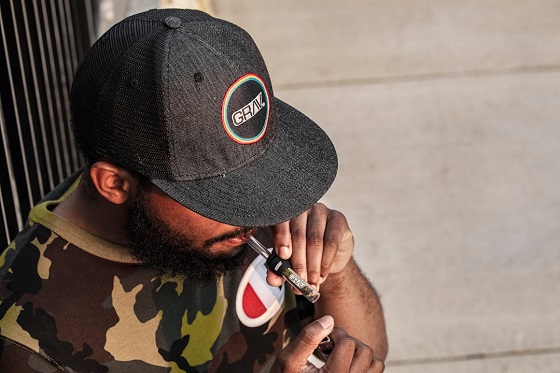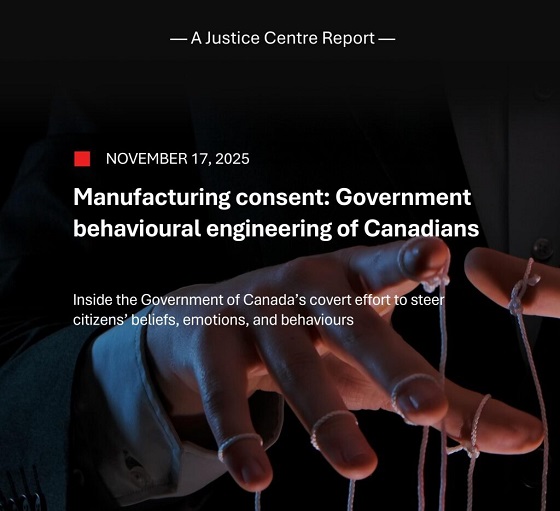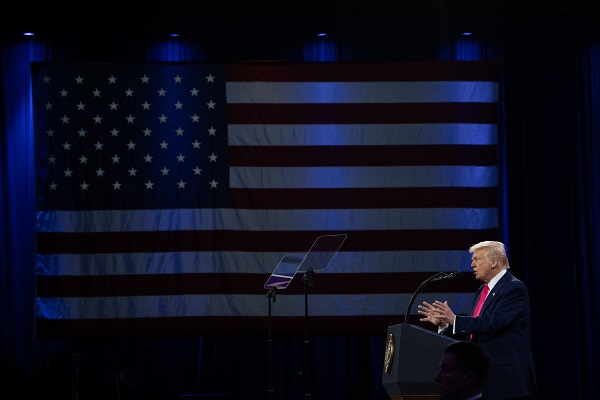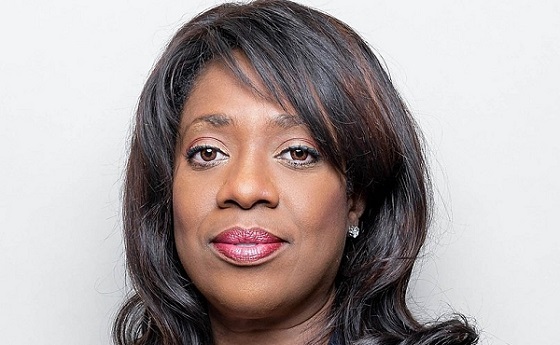Addictions
No, drug prohibition is not ‘white supremacy’

From Break The Needle
British Columbia’s top doctor released a report arguing that the legalization of all drugs combats “racism” and “colonialism.” That’s historically illiterate.
The notion that drug prohibition is inherently racist has become exceedingly popular within the harm reduction world and, by extension, inside many public health institutions and graduate programs. Yet anyone with even a cursory knowledge of history can see that this is absurd. Societies from all across the world have long understood the dangers of addictive substances and supported efforts to criminalize them—so why is this being ignored?
Though the “prohibition is racist” movement usually flies under the public’s radar, it was thrust into the limelight earlier this month when B.C.’s top doctor, Bonnie Henry, released a report calling for the legalization of all drugs. Not only did Henry recommend that dangerous substances—including meth, cocaine and fentanyl—be sold in stores much like alcohol and cannabis, her team asserted that prohibitionist policies are “based on a history of racism, white supremacy, paternalism, colonialism, classism and human rights violations.”
One would hope such sweeping declarations would have been backed with fulsome arguments and historical references, but that didn’t happen here.
Instead, the report simply emphasized how Canada’s original drug laws, dating back to the late 19th and early 20th centuries, were motivated by racist animus against Chinese immigrants. As opium was popular among these immigrants, the drug was believed to pose a special moral threat to white society and was among the first substances to be harshly policed. This, in turn, gave the state a new legal tool to harass Chinese Canadians and, in some cases, deport them.
After briefly explaining this point, Henry’s report concluded that, “Over time, the moral panic associated with drug use expanded to target many more groups of people, including Indigenous people, Black people, women, people of colour, and people of lower socioeconomic status.” This extrapolation was presented as a self-evident fact, without any evidence or citations to explain or substantiate it.
Henry’s recommendations were immediately rejected by the provincial government and savagely ridiculed in the media. Yet the views articulated in her report, shocking as they may have been to many, were not actually exceptional. They only rehashed the dominant beliefs of the harm reduction world—beliefs have also, over the past decade or so, permeated deeply into Canada’s public health bureaucracies.
Henry’s report may be dead in the water, but the underlying ideas which animated it are still very much alive and will, in all likelihood, continue to influence Canadian policymakers within the cloistered hallways of the civil service. This is a shame, because it is difficult to overstate how strange these kinds of beliefs are.
To argue that drug prohibition is broadly based on a history of racism, mostly because it was misused for racist purposes a century ago, is kindergarten-level reasoning. There are ample examples of non-European societies, past and present, embracing criminalization. This is glaringly obvious and, in many cases, common knowledge.
Subscribe for free to get our latest news and analysis – or donate to our investigative journalism fund.
Non-Western drug prohibition throughout the ages
Perhaps one of the greatest examples of non-European drug prohibition is Sharia law, which has banned the consumption of mind-altering substances since the 7th century. One wonders how harm reduction activists can claim, with a straight face, that prohibition is rooted in “colonialism” and “white supremacy” when Islam’s religious and legal texts supported it centuries before global European empires emerged.
Since harm reduction scholars are so concerned about Chinese experiences, it would be instructive to look toward China itself, where prohibition is also popular.
In the late 18th century, the British began exporting large quantities of opium to the Qing Empire (China), which quickly fomented a wave of addiction and social disorder. Soon after, Qing officials embarked on a multi-decade campaign to criminalize the drug. “Opium is a poison, undermining our good customs and morality. Its use is prohibited by law,” wrote the Daoguang Emperor in an edict issued in 1810.
By the mid-19th century, the Qing worried that, without drastic action, China would be left bereft of money and productive men—so they banned all sales of opium and destroyed any supply of it they could find, including European wares. This angered the British, who profited handsomely off the opium trade, and led them to victoriously wage war against the Qing—not once, but twice—to forcibly stop prohibition.
Narcotics thus continued to flow through the veins of China’s body politic, wreaking havoc for generations. Since then, Chinese nationalists have bitterly remembered the Opium Wars as a colonial crime which marked the beginning of China’s “century of humiliation.”
 |
The 98th Regiment of Foot at the attack on Chin-Kiang-Foo (Zhenjiang), 21 July 1842, resulting in the defeat of the Manchu government. Watercolour by military illustrator Richard Simkin (1840–1926).
This raises an important question: how exactly can anyone square this history with the ideological framework of the harm reduction movement? Were the Qing embodying some mystical form of white supremacy? Perhaps we should be grateful that the British sent their anti-racist warships to decolonize China’s drug laws.
Even today, the legacy of the Opium Wars continues to inform Chinese attitudes towards drugs—both within China itself (where strict prohibitionism is the norm) and in the diaspora.
In San Francisco, America’s petri dish for drug liberalization, it is Chinese-Americans who are leading a public backlash against progressive policies and calling for greater prohibition. Similarly, Chinese-Canadians were instrumental to Vancouver’s political pivot during the 2022 municipal elections, wherein the centrist ABC party swept the city council and the mayor’s office. Just this spring, Chinese-Canadian protestors in Richmond, the most ethnically Chinese city in North America , thwarted the launch of a new supervised consumption site, only to have a white progressive woman shout “Go back to Hong Kong” at them. No doubt another anti-racist activist.
When I interviewed almost a dozen Chinese-Canadian small business owners and workers in Vancouver’s historical Chinatown last summer, their support for prohibition was clear—and the legacy of the Opium Wars was invoked several times. Many other ethnic groups are processing similar historical traumas, and facing similar erasure. Do harm reduction activists forget, for example, that early European colonists devastated North American Indigenous communities by plying them with alcohol?
Indigenous leaders did not respond to that crisis by calling for more booze. On the contrary, they pushed for prohibition. Illustratively, when Treaties No. 6 and 7 were negotiated during the 1870s, Indigenous representatives asked for the “exclusion of fire water” from Saskatchewan, and that “no intoxicating liquor be allowed to be introduced or sold” on reserves. Even today, dozens of “dry” Indigenous reserves throughout Canada continue to ban alcohol and drugs to whatever extent they can.
When I interviewed over a dozen Indigenous elders and community members in Calgary last summer, their opposition to drug liberalization was clear—some went so far as to condemn decriminalization and “safer supply” programs as “pharmaceutical colonialism.” Ronnie Chickite, chief of the We Wai Kai Nation in British Columbia, told me this spring that his entire band council was “entirely against” decriminalization and that provincial officials had allegedly ignored them.
Building upon these interviews, two senior contacts in the Ontario government confirmed to me earlier this year that Indigenous leaders across the province seem to commonly hold prohibitionist beliefs. Who would have thought that Indigenous people could be such raging white supremacists?
Surveying the world today, it is clear that drug prohibition is actually strongest in non-European states—particularly East Asian and Middle Eastern ones—while liberalization is actually more popular in the West. It is telling that the harm reduction movement seems intent on ignoring this, or, alternatively, positioning non-white prohibitionism as a symptom of corrupting European influences. Both responses are, ironically, more than a little racist—how else can one describe the systematic erasure of non-European voices?
How is it that harm reduction advocates, who make such a theatre of their own “anti-racism,” cannot grasp that non-white communities have intellectual and cultural agency and do not simply let white people dictate their beliefs? In their obsessive disdain for European civilization, these advocates close their eyes to the rest of the world and inadvertently reproduce the same cultural narcissism that they ostensibly condemn—their calls for racial justice conceal a Eurocentric mindset sopping with paternalism.
How is this possible? How has this happened? A glimpse of an answer can be found in the “Acknowledgements” section of Henry’s report this month, where brief biographies of the report’s contributors were provided. Each contributor fixated on their ethnicity and, in many cases, proclaimed themselves as “third generation settlers” or “occupiers.” Unsurprisingly, almost everyone on the team was white. Though there were some Indigenous voices (who were seemingly relegated to working on exclusively Indigenous-related tasks, of course), not a single Asian, black or Middle-Eastern voice could be found.
The B.C. provincial health officer report’s contributors section:
So it seems that a bunch of white progressive bureaucrats produced a document that fixated on “colonialism” and “racism” while ignoring the actual beliefs of many, if not most, non-white communities. Nothing could encapsulate the harm reduction zeitgeist more perfectly: the privileging of empty gestures over real consultation, the self-indulgent self-flagellation of the white bourgeoisie, the patronizing assumption that minority communities have homogenous political beliefs that happen to align with progressive causes.
All of this would be comedic if lives weren’t at stake.
It should be clarified that there are many valid ways to criticize drug laws from a racial justice lens. Laws are just tools which we use to order society, and, like any tool, they can be abused—so it is fair to explore how some laws, in some contexts, have racist intentions or outcomes.
This is best illustrated by the wealth of scholarship criticizing American cannabis laws—in this case, critics have been able to concretely show that specific laws, in specific contexts, are being enforced unfairly and exacerbating inequities without producing justificatory social benefits.
Yet this mode of analysis, which focuses heavily on outcomes and concrete data, is an entirely different beast from the essentialist arguments recklessly flung around by the harm reduction movement. It makes sense to test measurable hypotheses about specific laws and their implementations. But to argue that drug prohibition is intrinsically “racist” is to succumb to ideological hallucination.
This essay originally appeared in The Hub and has been syndicated to Break The Needle through a co-publishing agreement.
Our content is always free – but if you want to help us commission more high-quality journalism, consider getting a voluntary paid subscription.
Addictions
Activists Claim Dealers Can Fix Canada’s Drug Problem

By Adam Zivo
We should learn from misguided experiments with activist-driven drug ideologies.
Some Canadian public-health researchers have argued that the nation’s drug dealers, far from being a public scourge, are central to the cause of “harm reduction,” and that drug criminalization makes it harder for them to provide this much-needed “mutual aid.” Incredibly, these ideas have gained traction among Canada’s policymakers, and some have even been put into practice.
Gillian Kolla, an influential harm-reduction activist and researcher, spearheaded the push to whitewash drug trafficking in Canada. Over the past decade, she has advocated for many of the country’s failed laissez-faire drug policies. In her 2020 doctoral dissertation, she described her hands-on research into Toronto’s “harm reduction satellite sites”—government-funded programs that paid drug users to provide services out of their homes.
The sites Kolla studied were operated by the nonprofit South Riverdale Community Health Centre (SRCHC) in Toronto. Addicts participating in the programs received $250 per month in exchange for distributing naloxone and clean paraphernalia (needles and crack pipes, for example), as well as for reversing overdoses and educating acquaintances on safer consumption practices. At the time of Kolla’s research (2016–2017), the SRCHC was operating nine satellite sites, which reportedly distributed about 1,500 needles and syringes per month.
Canada permits supervised consumption sites—facilities where people can use drugs under staff oversight—to operate so long as they receive an official exemption via the federal Controlled Drugs and Substances Act. As the sites Kolla observed did not receive exemptions, they were certainly illegal. Kolla herself acknowledged this in her dissertation, writing that she, with the approval of the University of Toronto, never recorded real names or locations in her field notes, in case law enforcement subpoenaed her research data.
Even so, the program seems to have enjoyed the blessing of Toronto’s public health officials and police. The satellite sites received local funding from 2010 onward, after a decade of operating on a volunteer basis, apparently with special protection from law enforcement. In her dissertation, Kolla described how SRCHC staff trained police officers to leave their sites alone, and how satellite-site workers received special ID badges and plaques to ward off arrest.
Kolla made it clear that many of these workers were not just addicts but dealers, too, and that tolerance of drug trafficking was a “key feature” of the satellite sites. She even described, in detail, how she observed one of the site workers packaging and selling heroin alongside crackpipes and needles.
In her dissertation, Kolla advocated expanding this permissive approach. She claimed that traffickers practice harm reduction by procuring high-quality drugs for their customers and avoiding selling doses that are too strong.
“Negative framings of drug selling as predatory and inherently lacking in care make it difficult to perceive the wide variety of acts of mutual aid and care that surround drug buying and selling as practices of care,” she wrote.
In truth, dealers routinely sell customers tainted or overly potent drugs. Anyone who works in the addiction field can testify that this is a major reason that overdose deaths are so common.
Ultimately, Kolla argued that “real harm reduction” should involve drug traffickers, and that criminalization creates “tremendous barriers” to this goal.
The same year she published her dissertation, Kolla cowrote a paper in the Harm Reduction Journal with her Ph.D. supervisor at the Dalla Lana School of Public Health. The article affirmed the view that drug traffickers are essential to the harm-reduction movement. Around this time, the SRCHC collaborated with the Toronto-based Parkdale Queen West Community Health Centre— the only other organization running such sites—to produce guidelines on how to replicate and scale up the experiment.
Thankfully, despite its local adoption, this idea did not catch on at the national level. It was among the few areas in the early 2020s where Canada did not fully descend into addiction-enabling madness. Yet, like-minded researchers still echo Kolla’s work.
In 2024, for example, a group of American harm-reduction advocates published a paper in Drug and Alcohol Dependence Reports that concluded, based on just six interviews with drug traffickers in Indianapolis, that dealers are “uniquely positioned” to provide harm-reduction services, partly because they are motivated by “the moral imperative to provide mutual aid.” Among other things, the authors argued that drug criminalization is harmful because it removes dealers from their social networks and prevents them from enacting “community-based practices of ethics and care.”
It’s instructive to review what ultimately happened with the originators of this movement—Kolla and the SRCHC. Having failed to whitewash drug trafficking, Kolla moved on to advocating for “safer supply”—an experimental strategy that provides addicts with free recreational drugs to dissuade use of riskier street substances. The Canadian government funded and expanded safer supply, thanks in large part to Kolla’s academic work. It abandoned the experiment after news broke that addicts resell their safer supply on the black market to buy illicit fentanyl, flooding communities with diverted opioids and fueling addiction.
The SRCHC was similarly discredited after a young mother, Karolina Huebner-Makurat, was shot and killed near the organization’s supervised consumption site in 2023. Subsequent media reports revealed that the organization had effectively ignored community complaints about public safety, and that staff had welcomed, and even supported, drug traffickers. One of the SRCHC’s harm-reduction workers was eventually convicted of helping Huebner-Makurat’s shooter evade capture by hiding him from the police in an Airbnb apartment and lying to the police.
There is no need for policymakers to repeat these mistakes, or to embrace its dysfunctional, activist-driven drug ideologies. Let this be another case study of why harm-reduction policies should be treated with extreme skepticism.
Our content is always free
If you want to help us commission more high-quality journalism,
consider getting a voluntary paid subscription.
Addictions
Canadian gov’t not stopping drug injection sites from being set up near schools, daycares

From LifeSiteNews
Canada’s health department told MPs there is not a minimum distance requirement between safe consumption sites and schools, daycares or playgrounds.
So-called “safe” drug injection sites do not require a minimum distance from schools, daycares, or even playgrounds, Health Canada has stated, and that has puzzled some MPs.
Canadian Health Minister Marjorie Michel recently told MPs that it was not up to the federal government to make rules around where drug use sites could be located.
“Health Canada does not set a minimum distance requirement between safe consumption sites and nearby locations such as schools, daycares or playgrounds,” the health department wrote in a submission to the House of Commons health committee.
“Nor does the department collect or maintain a comprehensive list of addresses for these facilities in Canada.”
Records show that there are 31 such “safe” injection sites allowed under the Controlled Drugs And Substances Act in six Canadian provinces. There are 13 are in Ontario, five each in Alberta, Quebec, and British Columbia, and two in Saskatchewan and one in Nova Scotia.
The department noted, as per Blacklock’s Reporter, that it considers the location of each site before approving it, including “expressions of community support or opposition.”
Michel had earlier told the committee that it was not her job to decide where such sites are located, saying, “This does not fall directly under my responsibility.”
Conservative MP Dan Mazier had asked for limits on where such “safe” injection drug sites would be placed, asking Michel in a recent committee meeting, “Do you personally review the applications before they’re approved?”
Michel said that “(a)pplications are reviewed by the department.”
Mazier stated, “Are you aware your department is approving supervised consumption sites next to daycares, schools and playgrounds?”
Michel said, “Supervised consumption sites were created to prevent overdose deaths.”
Mazier continued to press Michel, asking her how many “supervised consumption sites approved by your department are next to daycares.”
“I couldn’t tell you exactly how many,” Michel replied.
Mazier was mum on whether or not her department would commit to not approving such sites near schools, playgrounds, or daycares.
An injection site in Montreal, which opened in 2024, is located close to a kindergarten playground.
Conservative Party leader Pierre Poilievre has called such sites “drug dens” and has blasted them as not being “safe” and “disasters.”
Records show that the Liberal government has spent approximately $820 million from 2017 to 2022 on its Canadian Drugs and Substances Strategy. However, even Canada’s own Department of Health admitted in a 2023 report that the Liberals’ drug program only had “minimal” results.
Recently, LifeSiteNews reported that the British Columbia government decided to stop a so-called “safe supply” free drug program in light of a report revealing many of the hard drugs distributed via pharmacies were resold on the black market.
British Columbia Premier David Eby recently admitted that allowing the decriminalization of hard drugs in British Columbia via a federal pilot program was a mistake.
Former Prime Minister Justin Trudeau’s loose drug initiatives were deemed such a disaster in British Columbia that Eby’s government asked Trudeau to re-criminalize narcotic use in public spaces, a request that was granted.
Official figures show that overdoses went up during the decriminalization trial, with 3,313 deaths over 15 months, compared with 2,843 in the same time frame before drugs were temporarily legalized.
-

 COVID-1914 hours ago
COVID-1914 hours agoNew report warns Ottawa’s ‘nudge’ unit erodes democracy and public trust
-

 Great Reset2 days ago
Great Reset2 days agoEXCLUSIVE: A Provincial RCMP Veterans’ Association IS TARGETING VETERANS with Euthanasia
-

 Health2 days ago
Health2 days agoDisabled Canadians petition Parliament to reverse MAiD for non-terminal conditions
-

 Daily Caller2 days ago
Daily Caller2 days agoSpreading Sedition? Media Defends Democrats Calling On Soldiers And Officers To Defy Chain Of Command
-

 Crime1 day ago
Crime1 day agoHow Global Organized Crime Took Root In Canada
-

 Digital ID2 days ago
Digital ID2 days agoLeslyn Lewis urges fellow MPs to oppose Liberal push for mandatory digital IDs
-

 Business2 days ago
Business2 days agoThe Payout Path For Indigenous Claims Is Now National Policy
-

 Energy1 day ago
Energy1 day agoExpanding Canadian energy production could help lower global emissions








